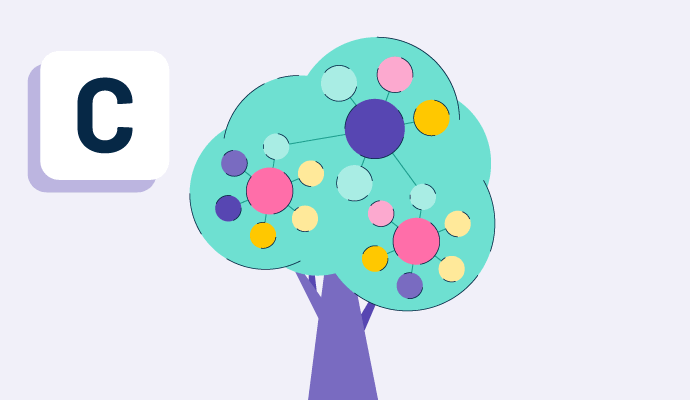What is corporate hierarchy?
A corporate hierarchy, or organizational structure, refers to the mapping and physical arrangement of team members based on title, job function, status, seniority, and authority. Different types of corporate hierarchies exist to support varying business sizes and models.
Generally, small businesses have simple hierarchical structures, and larger corporations have complex levels. Corporate orders delineate where leadership resides and which departments and divisions each leader oversees.
Businesses use org chart software to outline their corporate hierarchies and provide visibility into the structure for all employees. These tools facilitate internal communications and define individual roles in the company.
Types of corporate hierarchies
Organizations should select a corporate hierarchy that best suits their needs. Below are some of the most common types of structures a company can choose from.
- Hierarchical: Traditional hierarchical organizational structures look pyramid-shaped and reflect a chain of command from the top down. Pros of this structure are defined levels of authority, straightforward paths for promotions, and clear managerial reporting structures. However, this method can create too much bureaucracy and degrees of separation between team members.
- Functional: A functional org structure organizes team members from the top down, but arranges employees based on functions and skills. These functions often become independently-operating departments. Pros of this structure include arrangement by specialization and easy scalability, but due to the nature of segmenting functions, it also has the potential to produce departmental silos.
- Flat or horizontal: Commonly seen in startups, a flat org structure is a horizontal arrangement in which there are only a few levels between leadership and the rest of the team. More open communication and quicker paths to implementing new ideas make this structure appealing. On the other hand, when not executed properly, this structure can confuse employees since there aren’t layers of management outlined.
- Divisional: Divisional org structures, often found in large enterprises, categorizes team members into divisions that frequently operate as standalone entities within the broader organization. Divisions manage their own resources and can be arranged by market, product, or region. This structure offers flexibility and customization to meet each department’s needs. However, it can also be easy to duplicate roles since divisions operate independently.
- Matrix: A matrix structure highlights cross-functional team collaboration and reporting relationships for team members. This model works well for departments divided by projects or products. Advantages to this structure include open communication and the ability to quickly shift resources as needed, but it may also lead to frustration if employees have to navigate conflicting priorities and directions.
- Team-based: A team organizational structure groups employees by teams, such as scrum teams, in a development environment. This structure emphasizes experience over seniority and reduced silos. Unfortunately, opportunities for growth and advancement may be unclear to employees without a clear path.
Basic elements of corporate hierarchy
Organizations should consider a range of elements when selecting a corporate hierarchy for their team. Some of these might be:
- Job design. Job design refers to the different types of work across the organization and who does what. Corporate hierarchies should reflect the job designs they support.
- Departmental design. An effective departmental design groups jobs and individuals into various departments. This element should mirror how work is coordinated and completed amongst team members.
- Authority designations. Businesses must determine who has designated authority and to what extent. Authority designations should be clearly outlined in the corporate hierarchy.
- Company size. Although company size will likely fluctuate over time, organizations must choose a structure that supports their size. Businesses should consider current company size, as well as short-term plans for expansion.
Importance of corporate hierarchies
Businesses need a corporate hierarchy for numerous reasons, as discussed below.
- Clear roles and responsibilities: Organizational structures outline reporting frameworks and roles. They also clarify and help set expectations around responsibilities.
- Improved decision-making and collaboration: Corporate hierarchies provide a company-wide understanding of how teams work together and who makes decisions. Visibility into the company flows from the top down and can increase collaboration as team members understand whom to work with and who can help them make decisions when needed.
- Full view of the organization: Visual org charts give a view of the entire organization at a glance.
Corporate hierarchy best practices
Organizational structures require thought and intentional decision making. Leaders should take the following best practices into account when selecting and mapping their corporate hierarchy:
- Clearly define roles and titles. For employees to understand and follow organization chart setups, they must first understand roles and titles. The more clarity leaders provide, the easier it is for employees to adapt and learn when they join the organization.
- Look at the big picture. As companies grow, it’s tempting to concentrate on the structure of one team without examining how it fits into the larger organization. Companies should avoid creating silos and individual team structures that won’t align with their broader layout.
- Make changes based on feedback and experience. As an organization evolves, its structure may need to change. Input from employees helps supervisors understand what’s working and what’s confusing so the corporate hierarchy can evolve as required.
Once the org chart is complete and all corporate hierarchy details are correct, upload these details into the employee self service portal!

Alyssa Towns
Alyssa Towns works in communications and change management and is a freelance writer for G2. She mainly writes SaaS, productivity, and career-adjacent content. In her spare time, Alyssa is either enjoying a new restaurant with her husband, playing with her Bengal cats Yeti and Yowie, adventuring outdoors, or reading a book from her TBR list.













